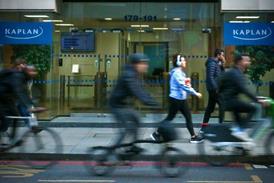A request to the European Court of Justice had been made in proceedings between Apple and the German Patent and Trade Mark Office, concerning the latter’s rejection of an application by Apple for registration of a trademark.
Apple Inc. v Deutsches Patent-und Markenamt: Court of Justice of the European Union (Third Chamber): 10 July 2014
Registration – Applicant company obtaining from relevant United States authorities registration of three-dimensional trademark depicting a retail store – Respondent German Patent and Trade Mark Office refusing extension of trademark to German territory on basis that mark devoid of distinctive character
In November 2010, Apple inc. (Apple) obtained from the United States Patent and Trademark Office the registration of a three-dimensional trademark consisting of the representation, by a design in colour (in particular, metallic grey and light brown), of its flagship stores for services within the meaning of Class 35 of the Nice Agreement (concerning the International Classification of Goods and Services for the Purpose of the Registration of Marks) (the Nice Agreement), namely for ‘retail store services featuring computers, computer software, computer peripherals, mobile phones, consumer electronics and related accessories and demonstrations of products relating thereto’.
That representation was described by Apple as ‘the distinctive design and layout of a retail store’. Subsequently, Apple sought to extend that trademark internationally under the Madrid Agreement concerning the International Registration of Marks, as revised and amended. That extension was accepted in some states and refused in others.
In January 2013, the respondent German Patent and Trade Mark Office (the DPMA) refused the extension of that trademark to German territory on the ground that the depiction of the space devoted to the sale of the undertaking’s products was nothing other than the representation of an essential aspect of that undertaking’s business. The DPMA further considered that the retail store depicted in the case before it was not sufficiently distinguishable from the stores of other providers of electronic products. Apple appealed to the Bundespatentgericht.
That court considered that the layout depicted by the three-dimensional trademark had features that distinguished it from the usual layout of retail stores in that electronic sector. Nevertheless, taking the view that the dispute before it raised more fundamental questions concerning trademark law, the Bundespatentgericht decided to stay the proceedings and to refer certain questions to the Court of Justice of the European Union (the court).
By its questions, the referring court asked, in essence, whether articles 2 and 3 of Directive (EC) 2008/95 of the European Parliament and of the Council (to approximate the laws of the member states relating to trademarks) (the directive) should be interpreted as meaning that the representation, by a design alone, without indicating the size or the proportions, of the layout of a retail store could be registered as a trademark for services which comprised various services aimed at inducing the consumer to purchase the products of the applicant for registration and, if so, whether such a ‘presentation of the establishment in which a service is provided’ could be treated in the same way as ‘packaging’.
The court ruled: It was well established that in order to be capable of constituting a trademark for the purposes of article 2 of the directive, the subject-matter of any application for registration had to satisfy three conditions. First, it should be a sign. Secondly, that sign had to be capable of graphic representation. Thirdly, the sign had to be capable of distinguishing the ‘goods’ or ‘services’ of one undertaking from those of other undertakings (see [17] of the judgment).
Articles 2 and 3 of the directive should be interpreted as meaning that the representation, by a design alone, without indicating the size or the proportions, of the layout of a retail store, could be registered as a trademark for services consisting in services relating to those goods but which did not form an integral part of the offer for sale thereof, provided that the sign was capable of distinguishing the services of the applicant for registration from those of other undertakings and that registration was not precluded by any of the grounds for refusal set out in that directive (see [27] of the judgment).

















![David Lester (senior partner at Blythe Liggins), Darryl Barnes, Jagdeep Sandher (head of dispute resolution at Blythe Liggins)[4]](https://d1d8vslyhr7rdg.cloudfront.net/Pictures/274x183/4/2/8/116428_davidlesterseniorpartneratblytheligginsdarrylbarnesjagdeepsandherheadofdisputeresolutionatblytheliggins4_981603_crop.jpg)









No comments yet